On my first day as a 12-year-old White House junior host, I had managed to spill a sterling silver bowl of spaghetti sauce in the red room, barely missing the Dolley Madison sofa that First Lady Jacqueline Kennedy had just reupholstered with silk.
More than six decades later, I clearly remember my horror at the prospect of doing even unintentional damage to a sacred place to which I had gained entry because my Irish-born father, Chuck Daly, had made a remarkable ascension from overseeing a fleet of industrial molasses trucks to serving as a special assistant to President John F. Kennedy.
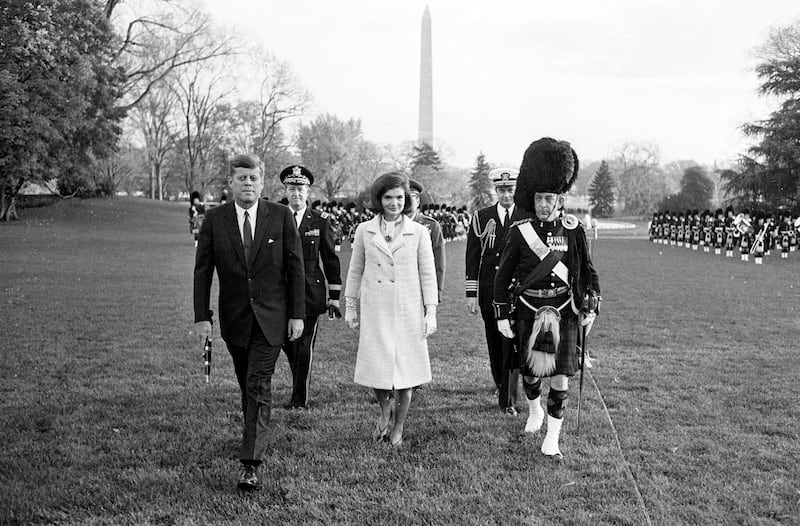
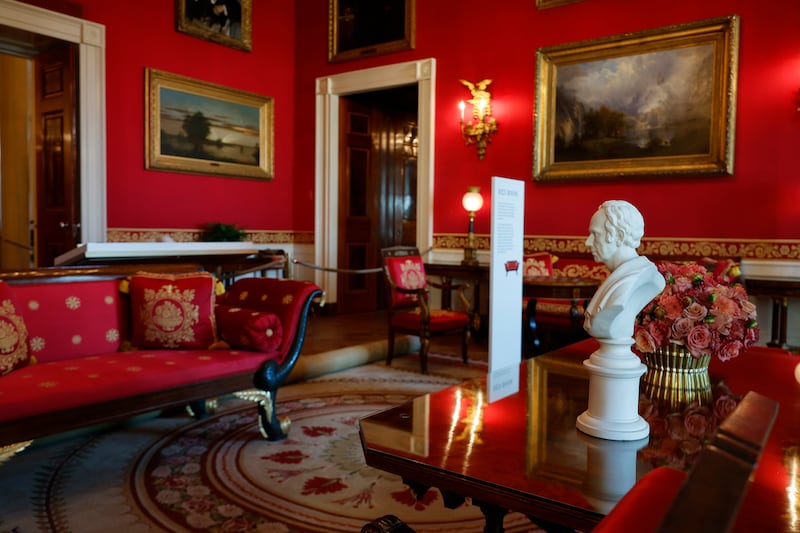
Now comes word that President Donald Trump is demolishing the entire East Wing of the White House to make room for a $300 million, 90,000 square foot “big beautiful ballroom.” I called Edward Lengel, former Chief Historian of the White House Historical Association.
“This is antithetical to what the founders intended for the White House,” Lengel told me. “There are different founders who had different ideas. Washington wanted it to be bigger. Thomas Jefferson wanted it to be smaller. But what they all agreed upon is that this was the People’s house, the residence of the First American, but meant to represent the people, to represent a democracy accessible to [the] people.”
Lengel added that Jefferson would have been particularly offended.
“You’ve got to remember the White House was designed during the French Revolution years,” Lengel said. “Jefferson did not want a palace of Versailles. Jefferson’s head would have exploded if he had seen this. I have no doubt in my mind, he would have gone insane.”
As it happens, Jefferson himself designed the West Colonnade, where Trump has made his first significant desecration of the White House itself. The previously unadorned open passageway runs between the West Wing and executive residence, and, during my brief abbreviated time as a White House junior host in 1963, I witnessed first hand that the actual greatness of a president is best appraised independent of any contrivance or trappings.
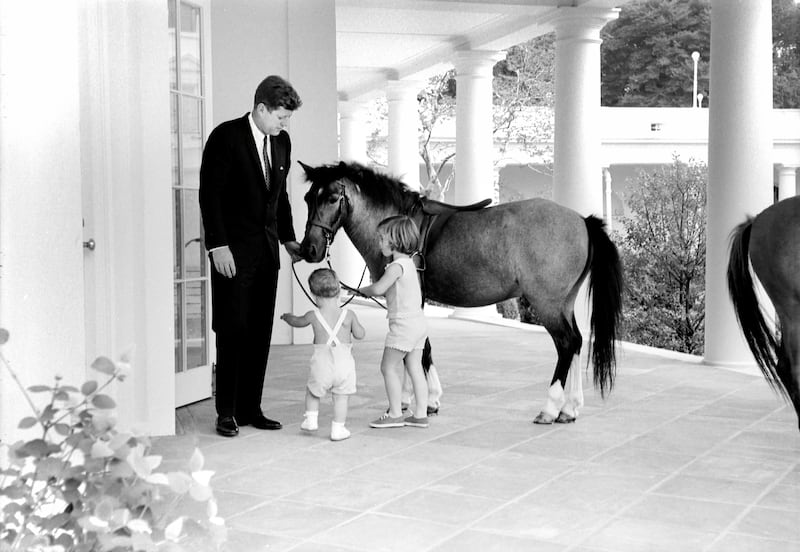
Prior to meeting Kennedy for the first time, my younger brother, Douglas, insisted he was not going to let himself be overly impressed by a guy simply because he was the president.
“I’m going to say, ‘Hiya, Prez,’” Douglas, then 10, said.
As I have written before, our father led us down the colonnade that runs past the Oval Office. A tall figure in a dark suit appeared and our father made the introductions.
Kennedy beamed with an easy, sunny confidence that did not require sycophants or accolades or self-delusion or compounded lies. He outshone any amount of gold, which by comparison would have just been some metal with no inherent value. His smile had not a hint of condescension as he extended a hand to Douglas that was at once firm and remarkably soft. Douglas was able to utter not a syllable.
Kennedy proceeded on, having rendered Douglas mute as a result not of his position but of his person. Kennedy did not seem to be a great man because he was the president. He seemed to be the president because he was a great man.
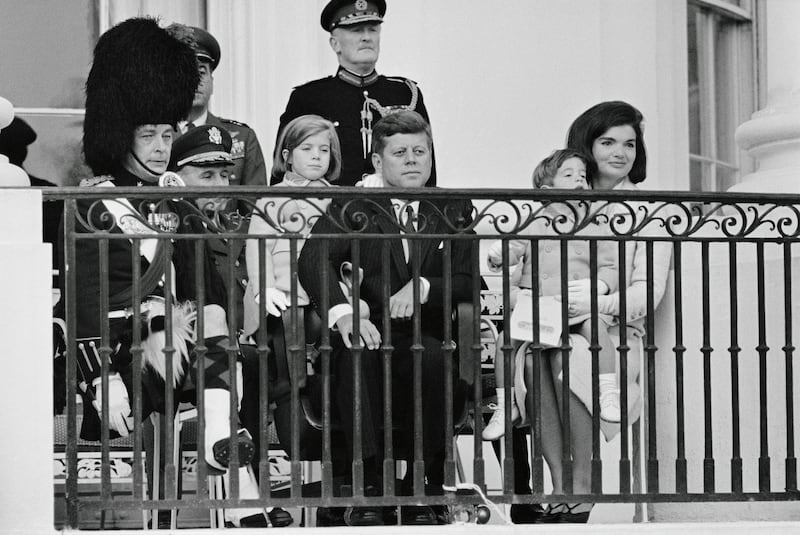
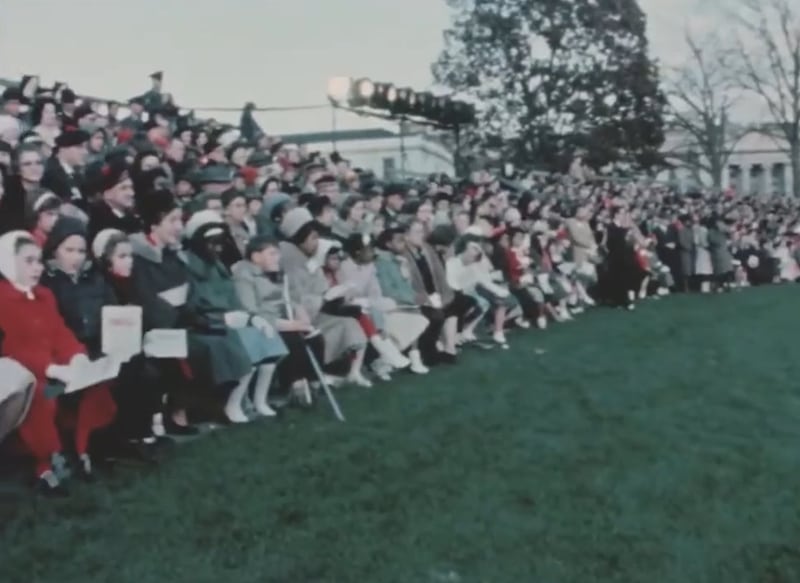
Douglas also became a junior host, on November 13, 1963. We both had an official name tag on our left breast, feeling part of something important. Our task that day was to help greet 1,700 youngsters from childcare agencies who had been invited to join the First Family in listening to the pipes and drums of the Black Watch, the famous Scottish army regiment then formally called the Royal Highland Regiment. We had to do little more than to point the kids toward an enormous supply of cookies. They devoured 10,000 in what had to be world record time.
At 4 p.m., the Black Watch filed out onto the South Lawn. They stood at attention in their tartan kilts, white knee breeches and bearskin hats as a Marine band struck up “Hail to the Chief.” The President strode out with the First Lady at his side. He seemed very much a chief and the spectators all rose unbidden.
“It is a great pleasure for Mrs. Kennedy and myself to welcome the Black Watch to the White House,” he said.
He noted that the Black Watch was a Scottish regiment, from a “green and misty country” that had fascinated him since he was a boy because it was a seemingly lost cause that had triumphed.
“The United States and in fact all of us love…lost causes,” he said.
Douglas had recovered his composure and stayed true to his sense of priorities. He figured he would have ample opportunity to see Kennedy in the future. He did not imagine he would hear these skirling pipers again.
“To me what was fixed was the President,” Douglas would recall. “The momentary was the bagpipes.”
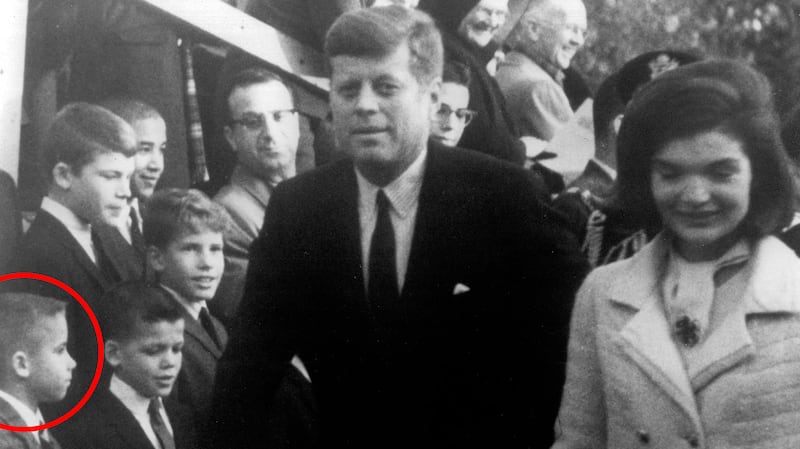
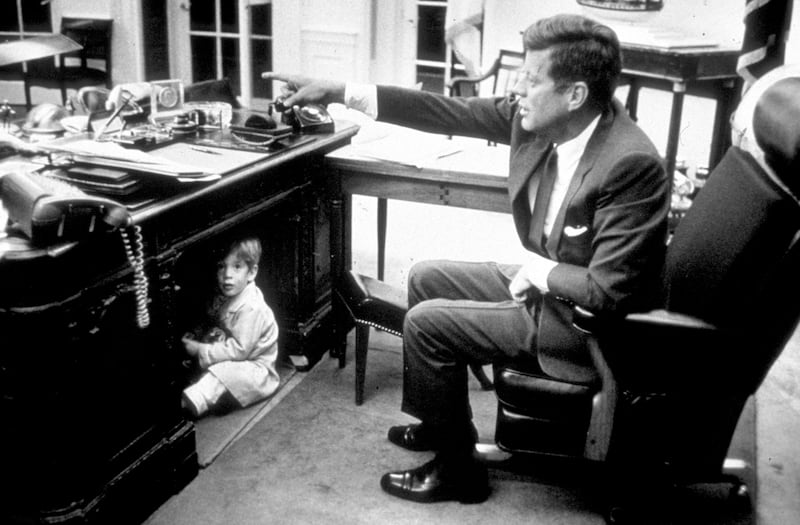
Nine days later, on Nov. 22, 1963, Kennedy was murdered by a 24-year-old with a rifle. Two days after that, our father took us into the East Room, where an honor guard stood before a flag covered coffin that gave measure to Kennedy’s greatness by seeming so impossibly small.
We later saw a photo taken the night of the assassination that showed our father walking in sorrowful silhouette along the same colonnade where Douglas had been so dazzled.
“The saddest picture I ever saw,” Douglas later said.
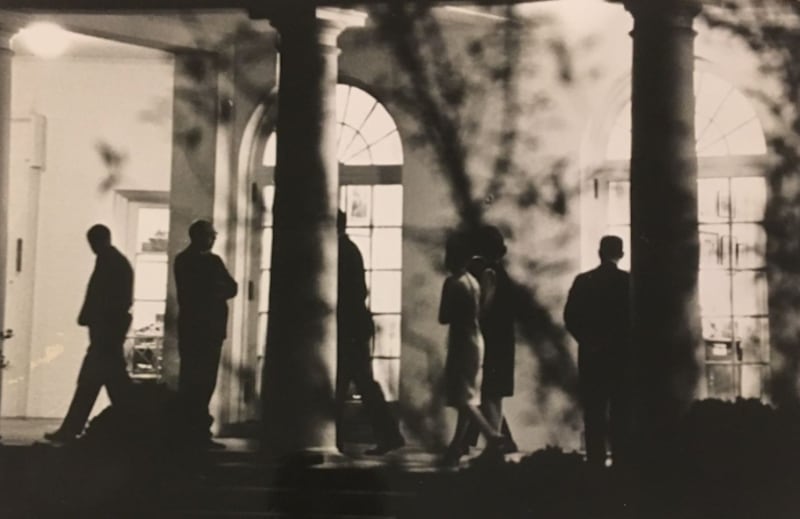
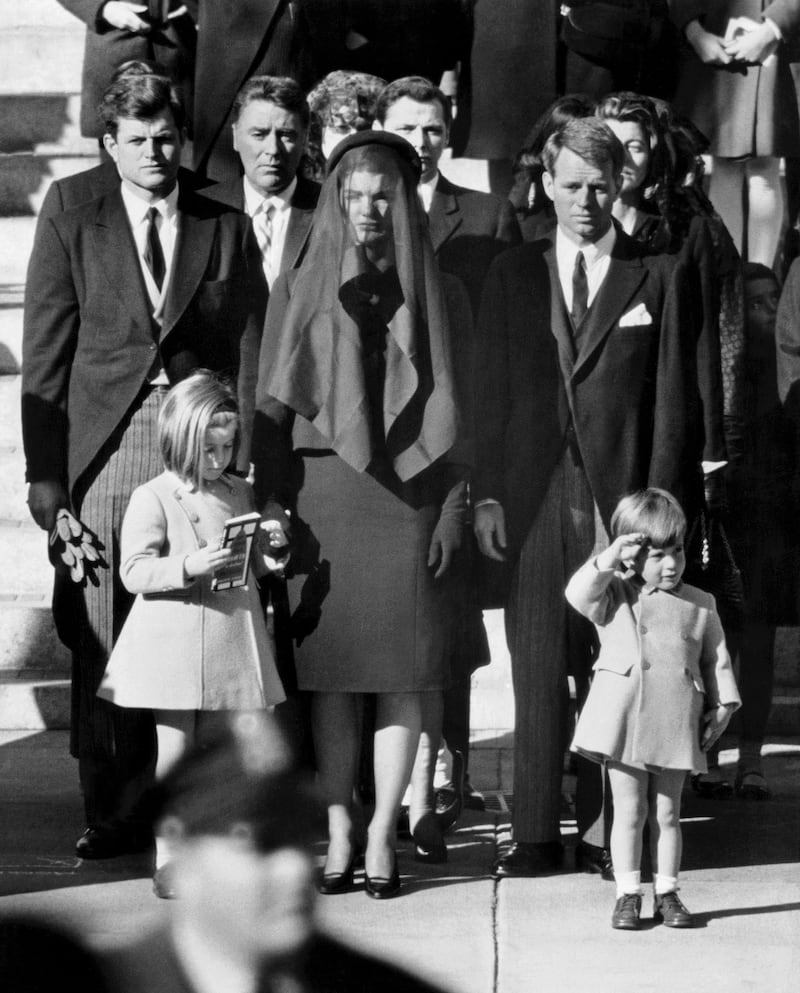
In recent days, the unadorned colonnade where Kennedy had shone with genuine greatness was turned tacky by the current president, who is enamored with gold and in perpetual need of praise and believes anybody who loves a lost cause is a loser.
He temporarily affixed gold letters to the wall reading “Presidential Walk of Fame,” partially inspired by the Hollywood Walk of Fame, which honors celebrities – including Donald Trump – with brass and terrazzo stars installed flush with the sidewalk. In the colonnade are 46 gold framed pictures of the president in chronological order, including two pictures of Trump, as he has twice held office. But instead of President Biden between the two of Trump, there is a picture of an autopen signing Biden’s name.
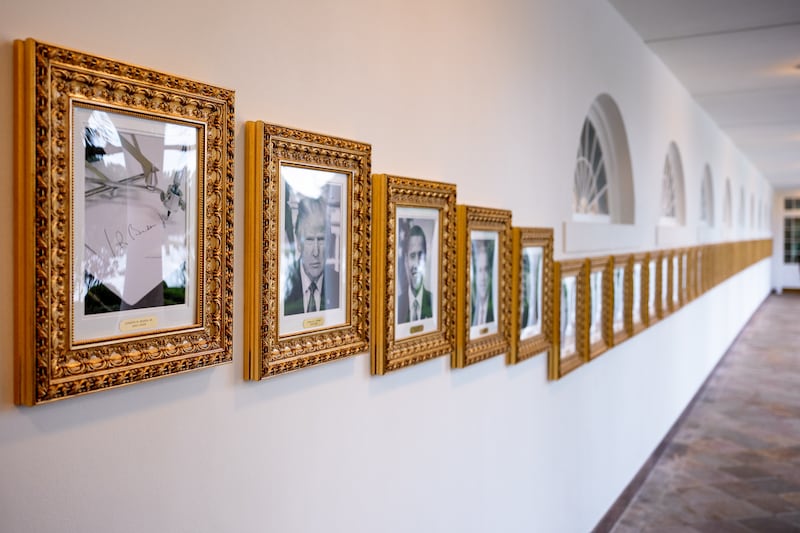
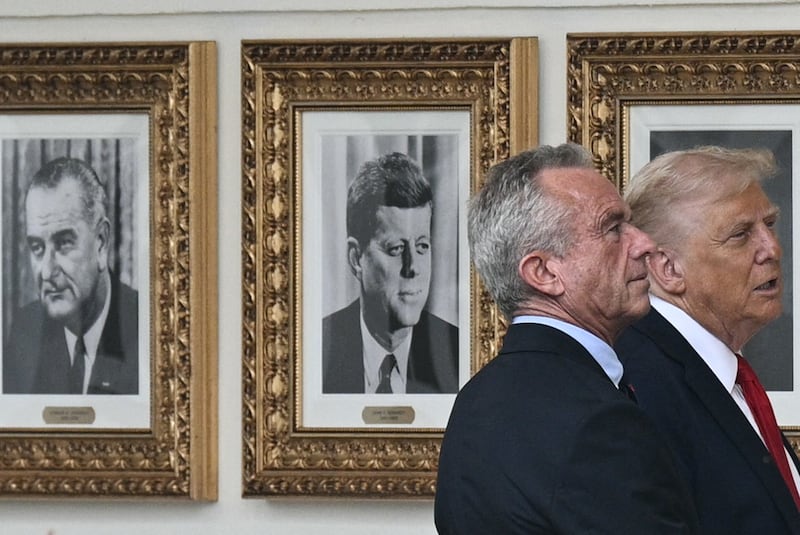
Trump is clearly making reference to his oft-repeated allegation that Biden was so addled toward the end of this term that he was letting others issue orders. However true or false that may be, the exclusion of Biden’s picture is a testament to Trump’s pettiness and refusal to accept that Biden beat him in 2020 and his continued insistence that the 2020 election was rigged.
And sadly that is just a relatively minor part of a larger, more profound desecration that Trump announced on Monday is now underway.
“I am pleased to announce that ground has been broken on the White House grounds to build the new, big, beautiful White House Ballroom,” he wrote in a Truth Social post. “Completely separate from the White House itself, the East Wing is being fully modernized as part of this process, and will be more beautiful than ever when it is complete!”
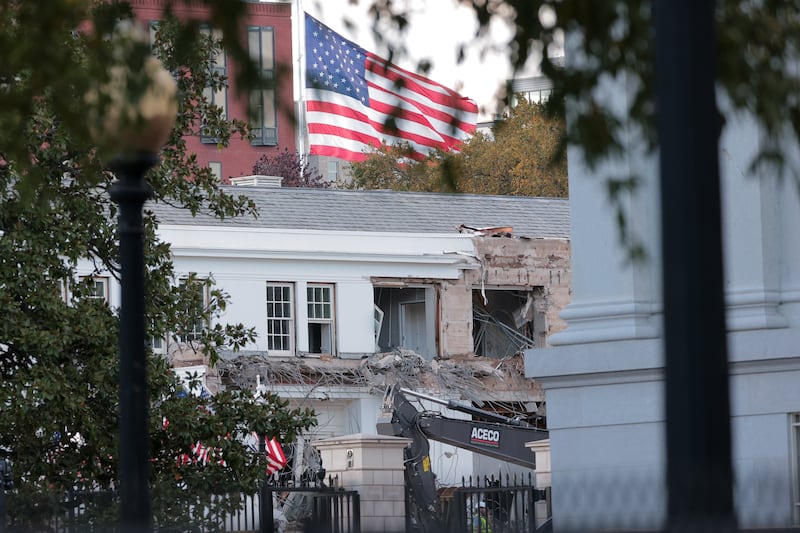
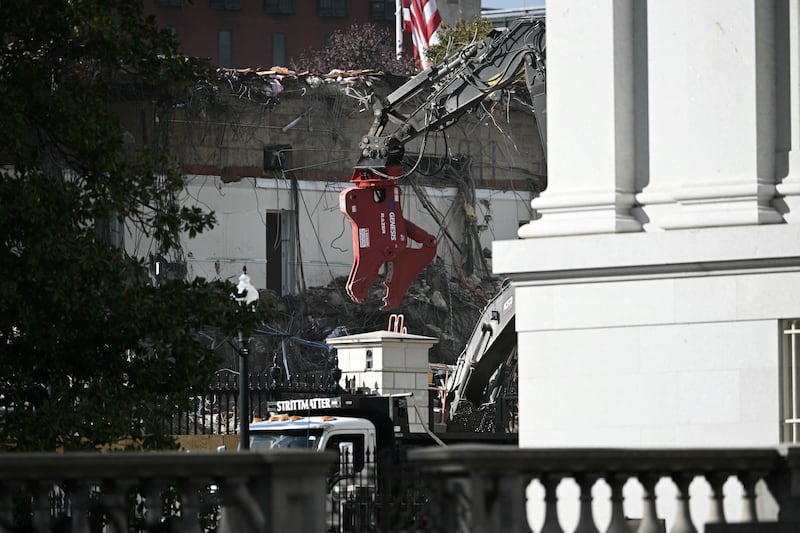
None of Trump’s predecessors appear to have voiced a need for such a HUGE addition. But that did not stop him from contending, “For more than 150 years, every President has dreamt about having a Ballroom at the White House to accommodate people for grand parties, State Visits, etc.”
In a July statement regarding the project , Trump had said, “It won’t interfere with the current building. It won’t be. It’ll be near it but not touching it–and pays total respect to the existing building, which I’m the biggest fan of.”
He added, “It’s my favorite. It’s my favorite place. I love it.”
Photos this week showed that “near it, but not touching it” at the “ground breaking” included partially demolishing the side of the East Wing. Trump admitted—boasted— on Wednesday that intends to take down the entire East Wing by the end of the week to make room for a ballroom big enough to seat seat 999.
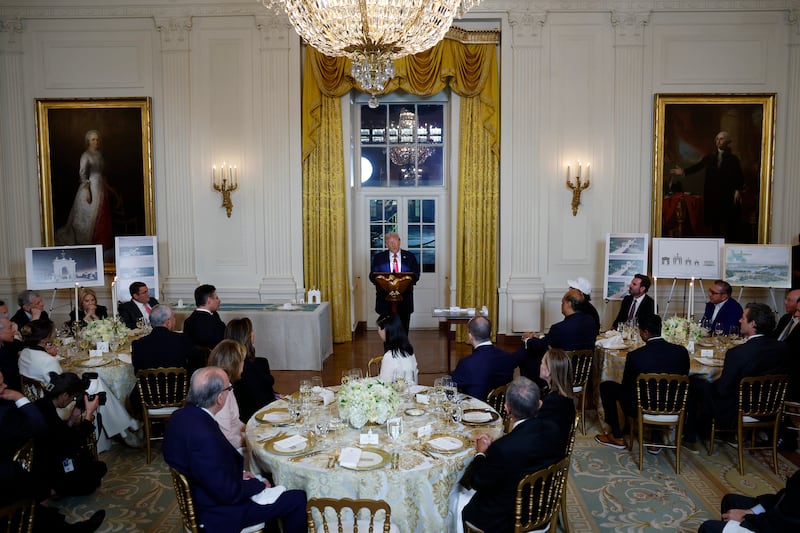
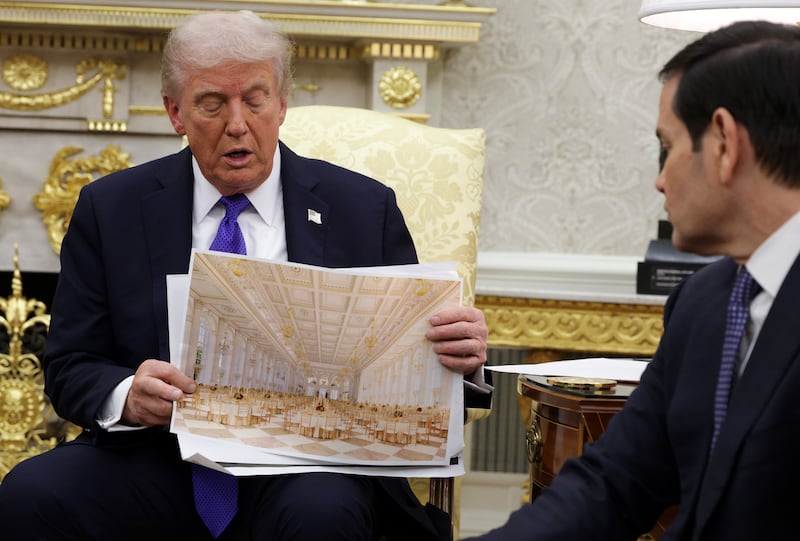
Trump says the project will be funded by private donors at “zero cost to the American Taxpayer!” And the unaltered White House was able to hold a dinner on October 15 for 130 billionaires and representatives of various major corporations that are kicking in to the one-profit that will handle the project. They are sure to become even richer thanks to Trump tax cuts offset in part by the health care cuts that the Democrats have declared unacceptable. The standoff has resulted in the government shutdown.
Back when he was running for a first term in 2016, Trump appealed to his base by saying there was no need for state dinners.
“We shouldn’t have dinners at all,” he told a campaign rally. “We should be eating a hamburger on a conference table.”
He added, “Forget the state dinners that cost, by the way, a fortune.”
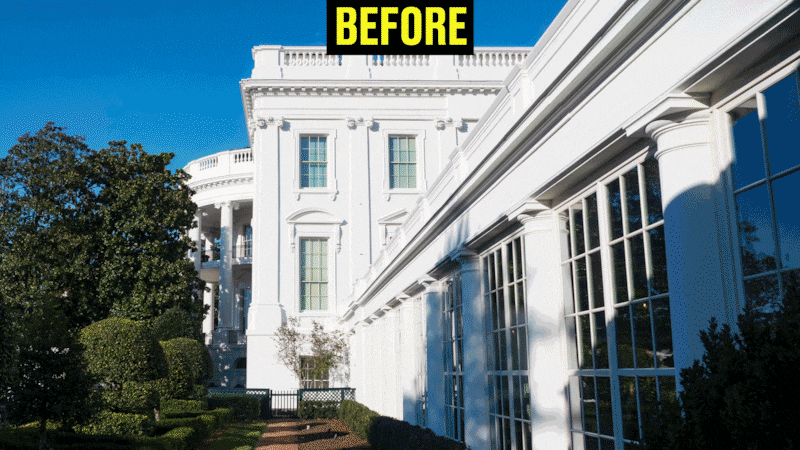
But that same year, Trump telephoned top Obama adviser David Axelrod to say he was willing to build a White House ballroom for even bigger events.
“I said, ‘David, I’ll build the ballroom. I’ll put up all the money’,” Trump recounted at another rally. “It’ll go so beautifully with the White House and be great. “
Trump further reported, “I never heard back.”
Now, during an ongoing government shutdown in Trump’s second term, work on his big beautiful ballroom continues.
“We’re kind of taking what the founders intended and flushing it down the toilet. I think this is irrevocable once it’s done,” Lengel told me.
“He can pave the Rose Garden, he can change the Oval Office, he can put gold in the decor. Any [subsequent] president can just take that down and reverse it.
“This cannot be reversed.”
The post Opinion: How Trump’s Teardown Defiles the True Greatness I Saw at The White House appeared first on The Daily Beast.




